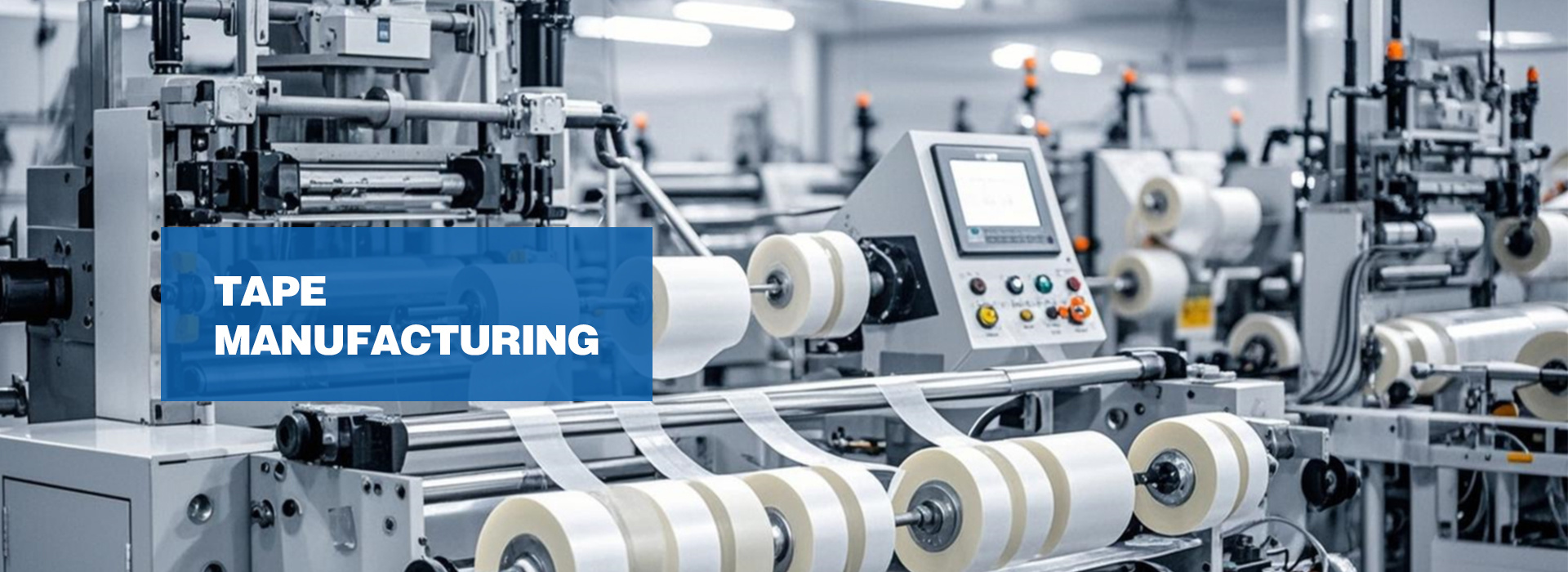How to Choose the Right Tape: A Complete Buying Guide for Small and Bulk Orders
Purchasing tape may sound simple, but choosing the wrong specification, low-quality rolls, or misleading meter length can easily result in wasted cost and poor performance. Whether you're buying a few rolls or placing bulk orders for manufacturing and packaging, understanding how to evaluate tape quality is essential.
This guide will teach you exactly how to avoid common pitfalls—based on industry experience and real factory standards—so you can make the right purchase every time.

1. Why Tape Purchases Often Go Wrong
Many buyers rely only on product titles or price when shopping online. But in the tape industry, quality is determined by details you cannot see in pictures:
The real meter length (some sellers inflate numbers)
The thickness of the paper core
How tightly the tape is wound
The adhesive coating weight
Actual width after slitting
Knowing these differences can help you identify reliable suppliers and avoid unnecessary losses.

2. Buying Small Quantities: What to Check Before You Buy
If you're buying fewer than 1–20 rolls, here’s what you must evaluate:
① Don’t trust meter length blindly
Online sellers often inflate tape length. A tape labeled 100 meters may only have 20–30 meters in reality.
How to check:
Look at the winding density
Compare roll diameter to known standards
Ask for real product videos from the seller
② Check the paper core thickness
Many low-cost tapes use thin 1–2mm cores, which compress easily and make the tape look “fatter” without adding real meters.
Factory-grade cores are usually:
3mm thickness
Rigid and not easily deformed
Ensures stable winding and accurate meter count
Thin cores = looks big, but the actual tape is less.
③ Inspect winding tightness
A tightly wound roll = stable quality + real length.
A loosely wound roll = reduced usable meters, lower stability, and higher risk of edge curling.
Rule of Thumb:
Tight winding = Good tape
Loose winding = Low-quality tape
④ Start with a sample box
Before making a larger purchase, buy 1 box to test:
Adhesion strength
Stickiness after 24 hours
Tensile strength
Residue performance
Real meter count
If the tape performs well and meets expectations, then move to bulk purchasing.
⑤ Compare after receiving, not before
Many tapes look similar online. The real comparison comes after you get them in hand:
Stickiness
Holding power
Thickness
Meter length
Material quality
Your best tape will always be the one that performs well in actual application. If you use small quantities and prioritize quality over price, then blindly choose top brands like 3M or Tesa. If you are price-sensitive and value quality, then follow the methods above.
3. Buying in Bulk: What You MUST Know (For Distributors & Factories)
If you're ordering hundreds of rolls or full pallets, these evaluation points become even more crucial.
① Always buy directly from a factory
Factories like Abendo control:
Adhesive formula
Coating weight
Film substrate
Slitting tolerance
Meter length accuracy
This ensures consistency—especially important for large orders.
② Confirm real specifications with technical sheets
For B2B orders, ask the supplier to provide:
Film thickness
Adhesive type (hotmelt / acrylic / solvent)
Adhesive coating weight
Core thickness
Roll weight
Meter accuracy tolerance
These data points determine stability in automation and packaging lines.
③ Request a pre-production sample
Before mass production, ask for:
PPS (Pre-Production Sample)
Photos or video of your exact specs
Confirmation of packaging and labeling
This reduces risks and ensures consistency for each shipment.
④ Evaluate supplier capacity
Large orders require reliable manufacturing capabilities:
Daily output
Number of coating lines
Slitting machines
Lead time
QC process
Factories like Abendo, which have multiple production lines, guarantee supply stability and on-time delivery.
⑤ Discuss customization and private label
Bulk orders often need:
Custom width
Custom length
Printed logo
Carton packaging
OEM branding
Special adhesive formulations
These can only be reliably achieved with factory-level production.
4. Essential Tape-Buying Checklist (For All Buyers)
Whether you're buying 2 rolls or 2 container loads, follow this checklist:
✔ Check the real meter length, not the label
✔ Look at the paper core thickness (3mm is standard)
✔ Inspect winding tightness—dense = good
✔ Test adhesion and holding power
✔ Start small, then scale up
✔ Compare after receiving, not before
✔ Choose a factory for stable quality & real specs
5. Why Buying from a Manufacturer Like Abendo Makes a Difference
As a professional industrial tape manufacturer, Abendo ensures:
Real meter count with strict length tolerance
Thick 3mm paper cores for stability
Tight winding for uniform usage
High-performance adhesives for long-lasting bonding
Full customization for B2B and OEM clients
From packaging tapes, masking tapes, double-sided tapes, to industrial-grade solutions, we provide trusted and consistent quality for global distributors and factories.
Conclusion
Choosing the right tape comes down to understanding what truly affects quality:
Real specifications
Core thickness
Adhesion performance
Winding density
Reliable factory manufacturing
With the right knowledge, you can make confident purchasing decisions—avoiding inflated specs and low-quality rolls. Whether you're buying small quantities or planning bulk orders, follow this guide to get exactly what you pay for.
If you need reliable, factory-direct tape with consistent quality, Abendo is ready to support your business.
Keyword:
how to buy tape,packaging tape guide,adhesive tape buying tips
RELATED NEWS


